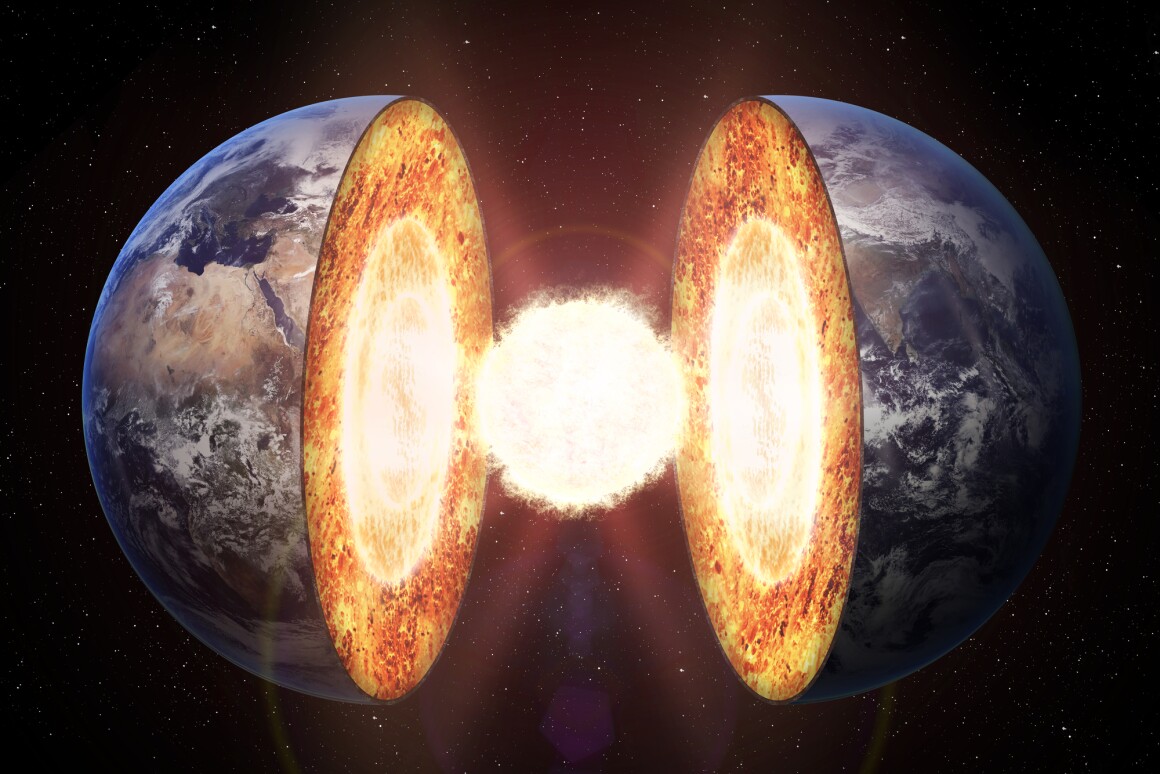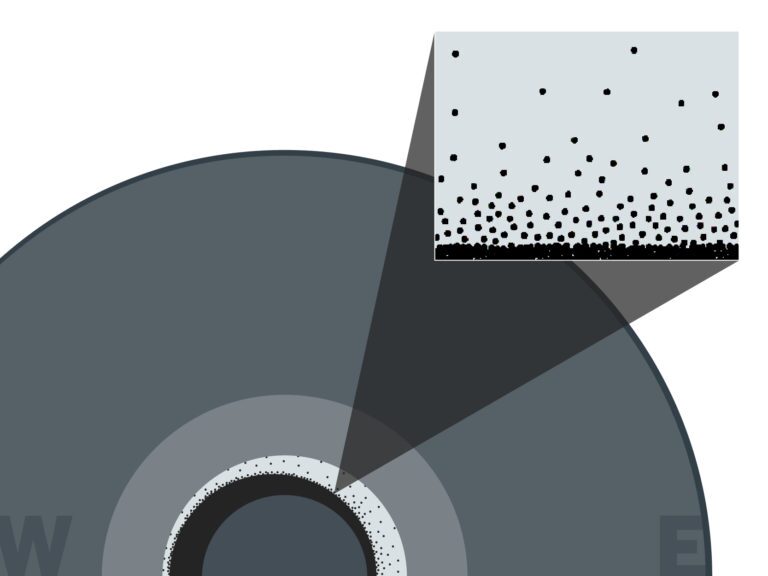Evidence points to ‘iron snow’ falling on Earth’s inner core

A team of geologists from China and the US have found evidence to suggest that snow may be falling within the broiling hot core of planet Earth. Of course, this isn’t your everyday surface snow – the researchers say that these flakes would be made of iron alloys, gently settling down onto the solid inner core through the more fluid outer core.
Our best models of Earth’s inner workings tell us that our planet is a layer-cake of different materials. We’re walking around atop a thin, rocky crust, which floats on top of a flowing-but-largely-solid mantle. Below that lies the outer core, an extremely hot ring of molten iron that surrounds the solid iron inner core.
Since there’s 2,890 km (1,800 mi) of rock in the way, it’s hard to see what’s going on down there. To study it, scientists instead record and analyze how seismic waves propagate through the different materials. If they speed up or slow down at certain points, it can reveal the viscosity of different layers and hint at what they may be made up of.

But this kind of work has revealed some surprises that don’t fit with our current models. For example, seismic waves seem to move slower than expected through the inner part of the outer core, and faster than expected through the top of the inner core, particularly in the eastern hemisphere.
The researchers on the new study put forward a theory that explains those anomalies: iron “snow.” According to experiments conducted using materials similar to those in the core, it’s possible for molten iron in the lower part of the outer core to crystallize, which would then slowly sink and settle onto the more solid inner core.
“It’s sort of a bizarre thing to think about,” says Nick Dygert, co-author of the study. “You have crystals within the outer core snowing down onto the inner core over a distance of several hundred kilometers.”
This snowy substance would have a slurry-like texture, that would slow down seismic waves. And because it wouldn’t be a uniform layer, it may be thinner in the eastern hemisphere and thicker in the west, accounting for different speeds between those areas. The team says that this process could also explain why the inner core is growing.
If it is snowing in the planet’s core, this could be having effects on many Earthly processes, including how heat and rock moves around in different sections, and how the magnetic field is generated.
“The inner-core boundary is not a simple and smooth surface, which may affect the thermal conduction and the convections of the core,” says Youjun Zhang, lead author of the study.
This isn’t the first surprising theory put forward about the Earth’s innards. Recent research has found a huge mountain range in the mantle, a “jet stream” of fast-moving fluid in the outer core, and revealed that the inner core is far younger than the rest of the planet.
The new study was published in the journal JGR Solid Earth.
Source: University of Texas at Austin
PRINCIPIA SCIENTIFIC INTERNATIONAL, legally registered in the UK as a company  incorporated for charitable purposes. Head Office: 27 Old Gloucester Street, London WC1N 3AX.
incorporated for charitable purposes. Head Office: 27 Old Gloucester Street, London WC1N 3AX.
Please DONATE TODAY To Help Our Non-Profit Mission To Defend The Scientific Method.
Trackback from your site.

JaKo
| #
Evidence?
We have our Magnetic North racing toward Siberia and all we could come up with is an “Iron Snow?”
I wish I did finish my studies and become one of these “scientists” — no more dope man, the Hi comes with one’s “profession!”
Reply
Zoe Phin
| #
When Iron Snow falls in, does hot liquid goop rise?
Sounds like a good heat transport mechanism. Could explain why
https://phzoe.wordpress.com/2019/12/06/measuring-geothermal-1/
Reply
tom0mason
| #
Falling through what?
“the researchers say that these flakes would be made of iron alloys, gently settling down onto the solid inner core through the more fluid outer core.”
Basically falling through a hot, iron rich slurry.
So the evidence is “The researchers on the new study put forward a theory that explains those anomalies: iron “snow.” According to experiments conducted using materials similar to those in the core, it’s possible for molten iron in the lower part of the outer core to crystallize, which would then slowly sink and settle onto the more solid inner core.”
[my bold]
So it’s hot, heavy iron rich crystal flakes falling through a lighter iron rich slurry. But how similar is the Earth’s core to their assumed chemical and thermal model of the core?
As is said “The Earth’s core is known to be composed of an Fe light-element alloy to balance its density deficit and velocity differences in seismic models compared to that of Fe-Ni alloy in mineral physics studies at relevant P-T conditions. Several light element candidates have been proposed, such as Si, O, S, C, and H (Poirier, 1994a), although which of these elements is the most abundant in the core is still a matter of intense debate (Li and Fei, 2014).
The presence of a combination of these light elements is necessary to explain the density deficits and velocity discrepancies between pressure-density-velocity profiles of Fe and seismological observations (Hirose et al., 2013).”
[my bold]
From my reading of their paper they make some reasonable assumptions what attempted to explain some anomalies, however (IMO) until we know what the core is made of it is just another theory that needs more real world evidence to make it truly worthy.
Reply